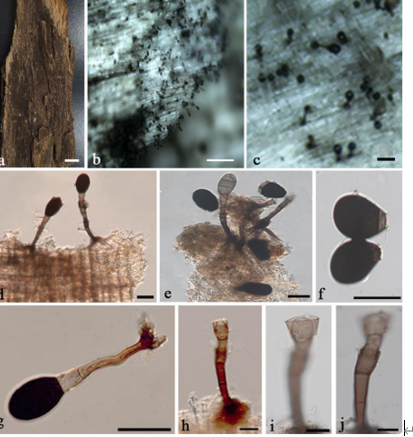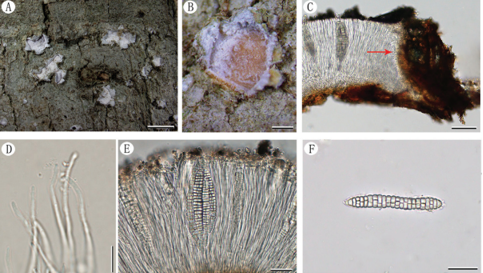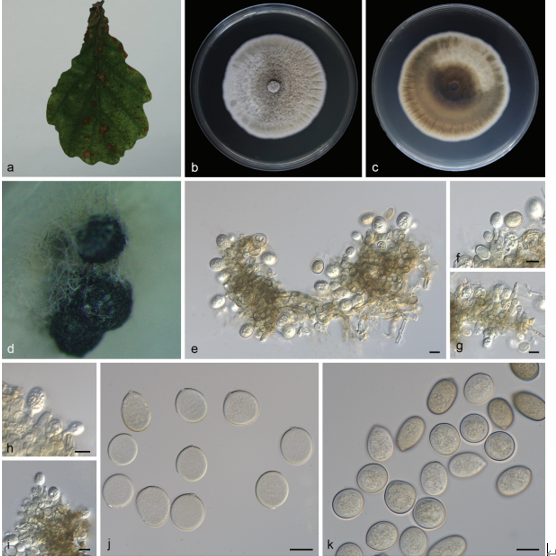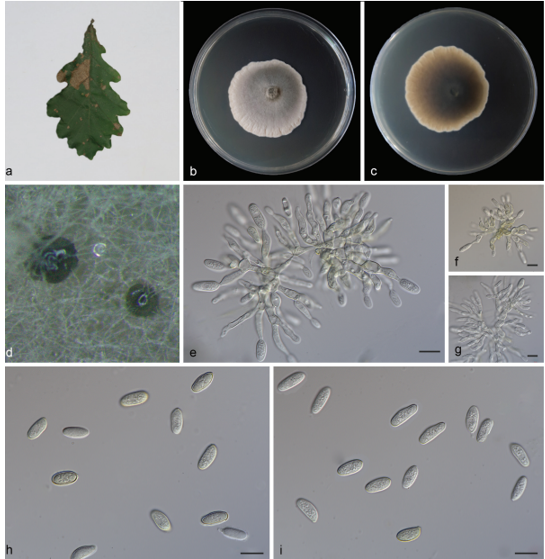Amylocorticium ellipsosporum S.H. He 2020
MycoBank MB830034; Facesoffungi number: FoF 06039
Holotype: CHINA, Fujian Province, Wuyishan Nature Reserve, on rotten trunk of Tsuga chinensis var. tchekiangenesis, 17 August 2016, He 4457 (BJFC 023898, holotype).
Morphological description
Basidiocarp Annual, resupinate, effuse, separable, without odour or taste when fresh, pellicular to membranaceous, up to 10 cm long, 2 cm wide, 0.3 mm thick. Hymenophore smooth, cream to pale orange, not cracking or sparsely cracking after drying; margin thining out, fimbriate, white or concolorous with the hymenophoral surface. Hyphal system monomitic; generative hyphae with clamp connections at all septa. Subiculum distinct, with a loose texture; hyphae in this layer hyaline, thin- to slightly thick-walled, moderately branched, frequently septate, loosely interwoven, 2–4 µm diam. Subhymenium with a rather compact texture; hyphae in this layer hyaline, thin-walled, frequently branched and septate, densely interwoven, more or less agglutinated, 2.5–4.5 µm diam. Cystidia and cystidioles absent. Basidia clavate, with a basal clamp connection and four sterigmata, 15–20 × 4–5 µm; basidioles in shape similar to basidia, but slightly smaller. Basidiospores ellipsoid, hyaline, thin-walled, smooth, amyloid in Melzer’s reagent, 3.5–4.5(–5) × 2–2.5(–3) µm, L = 3.95 µm, W = 2.22 µm, Q = 1.78 (n = 30/1).
Habitat: On rotten trunk of Tsuga chinensis var.
Distribution: In China.
GenBank Accession: ITS: MK520876; LSU: MK491341
Notes: Amylocorticium ellipsosporum is characterized by having cream-colored basidiocarps and small ellipsoid basidiospores. In the phylogenetic tree, A. ellipsosporum formed a strongly supported lineage, sister to A. indicum which is here reported in China for the first time (Fig. 84). However, A. indicum has large yellow basidiocarps and slenderer basidiospores (4–5 × 1.7–2.2 µm, Thind and Rattan 1972). A. ellipsosporum is similar to A. mauiense Gilb. & Hemmes by sharing small ellipsoid basidiospores, but the latter species differs in having shorter basidia (12–14 µm) and a distribution in Hawaii and growing on Pinus spp. (Gilbertson and Hemmes 2004).
Reference: Hai‑Sheng Yuan1,2· Xu Lu1,2 · Yu‑Cheng Dai3 ·
Microscopic structures of Amylocorticium ellipsosporum (BJFC 023898, holotype). a Basidiospores. b Basidia and basidioles. C Hyphae from subiculum









